Community Perspectives
How a promoter brought Middle East Nights to WeHo Gay Bars
Mas is interested in challenging assumptions in the West about sexuality in the Middle East
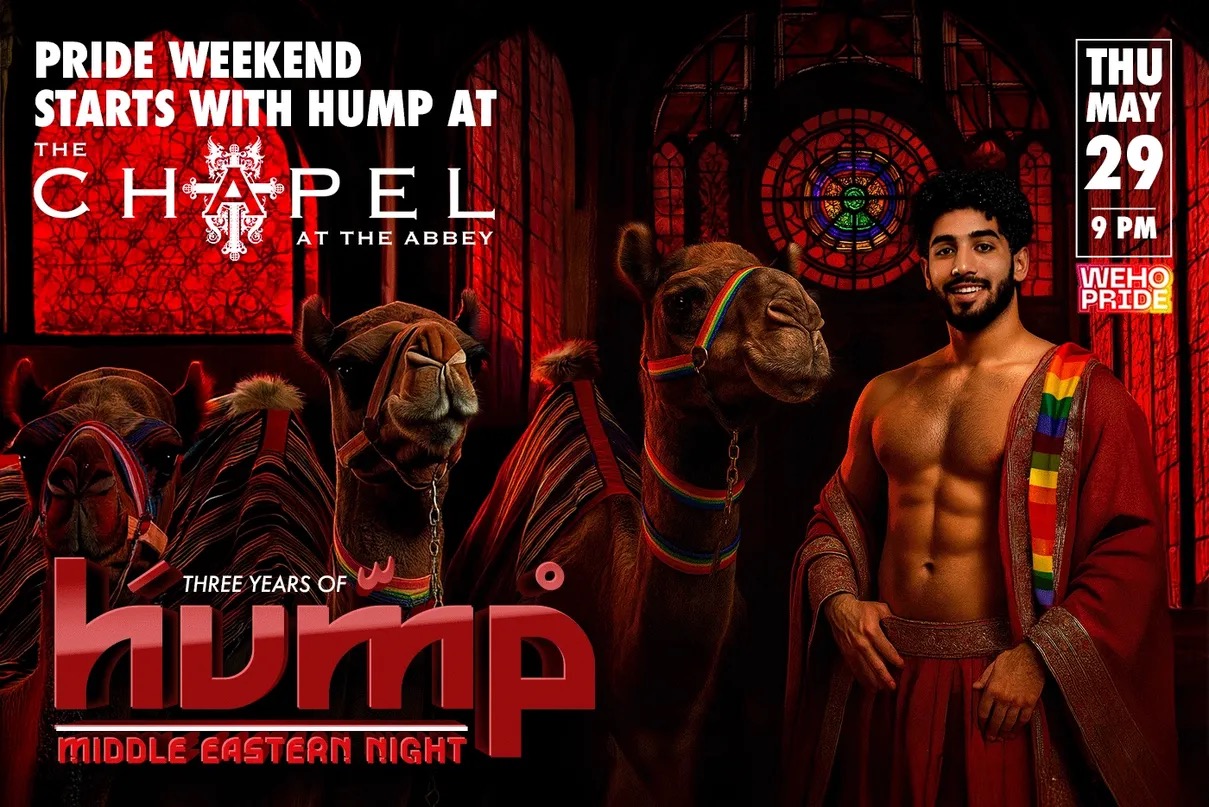
Mas never meant to become a club promoter. He’s a broad man with a neat beard and twinkling eyes above a grin. After studying marketing and management in the U.S., he returned to the Middle East to help a Dubai company open luxury movie theaters across the region — including the first ever movie theater in Saudi Arabia.
When Covid-19 hit, theaters shuttered and the Lebanese economy crashed. Banks locked people’s money and so, starting over with nothing, he returned to Los Angeles, where he crashed on a friend’s couch for three months.
Ingenuity makes strange bedfellows. When Micky’s in WeHo offered Mas a bartending gig, he pitched the idea of taking over their marketing campaigns instead. Months later, after helping to get the word out about all sorts of different events and evenings, the club asked him if he’d consider hosting a night.
Mas is interested in challenging assumptions in the West about sexuality in the Middle East by hosting this night in the gay-famous WeHo community.
At the time, Mas says, there were no events for the gay Middle Eastern community in L.A., which includes Arabs, Persians and Armenians. The only other gay, Middle Eastern-oriented club was Club Nur, which is now permanently closed. So he thought of hosting his own.
“I wanted to create a space for us to listen to our music,” said Mas. “A place for us to be homesick.”
As a new promoter, the club didn’t offer Mas a weekend, but rather a Wednesday night, which are notoriously difficult to sell. But the day gave Mas the name for his first foray into nightlife.
“They already call it hump day,” he said.
The associations: camels and being horny.
“Save a Camel, Hump a Habibi,” says the screen at the bar, over an image of a shirtless man surrounded by decorative lamps. “Habibi,” is a word in Arabic without an easy translation. The most direct is, “beloved,” or “my dear,” but the part that defies translation is how it means both “friend” and “lover.”
For the first Hump event, the team brought a real live camel to West Hollywood to stand out in front of Micky’s as a photo op.
“To this day that’s what’s remembered,” he said.
People for the Ethical Treatment of Animals (PETA) got wind of what was happening and was not pleased — but Mas explains with an eye roll, that the camel was there for one hour, on an off night, with two trainers and was well looked after.
Mas then spoke about the club promotion politics of that night.
“I was a closeted college student in Louisiana when 9/11 happened,” he said, sharing how his white American friends ran errands for him in the days following the attacks so he wouldn’t run the risk of harassment just for leaving the apartment.
“I still get searched in every airport,” he laughed.
In 2008, he went on America’s Got Talent to perform belly dancing. During his audition, he told the panel that he was there to show the peaceful side of the Middle East and a producer came to him afterward, thanked him for his bravery, and told him that unfortunately they would have to cut his segment from the show for venturing into politics.
“People assume the West is better for gays, but that’s not always true,” he said. “The first experience of homophobia I remember, coming from Lebanon, was while my family was on vacation in Italy.”
“There were five gay clubs in Lebanon growing up,” said Mas. “They were more hidden than here, but they were there.”
He recalls that in Dubai, gay parties happened all the time, but the addresses would be released last-minute to prevent them from being shut down — much like LA’s thriving queer warehouse party scene. People will always find a way.
“In Lebanon, growing up, there was not one type of music.” Lebanon is a crossroads of culture, and influences from Europe and the Middle East mingled freely. “You’d hear English, Spanish, French, and Turkish, even just in how people greeted each other in the street.”
The mix of tunes at Hump parties reflects this vibrant music scene.
I attended Hump at Chapel at The Abbey in March, and the Persian holiday of Nowruz, the new year and start of spring.
“Tonight we’re celebrating the Persian people,” said Mas enthusiastically.
His framework is based on the question: who is being celebrated?
It’s a mixed crowd, and the music oscillates between American pop hits and Persian pop classics. “This one has 3 million Shazams,” exclaimed the similarly clueless white boy next to me when we look up the song that’s playing — which has inspired an eruption of passionate singing-along from the middle of the dance floor. My friend Ruben, who’s from Guatemala, twirls another man through classic Salsa steps, to the Persian beat.
“I don’t know a word, but it still makes me move my hips,” he laughed.
I was pleasantly surprised to find another friend, Ameed, working at the door. His social media feed is a continual anguished cry for his native Palestine, but here he sports a broad grin under his keffiyeh, welcoming people in.
“I never thought something like this could exist,” he said. “I was nervous my first time coming,” Ameed explains how coming out as gay to his family led him to take a step back from his own culture, even to see it as bad or bullying. “Every gay Arab guy has some sort of trauma,” he says. “But here I get to enjoy the parts of my culture I enjoy, while still feeling safe — and I get to meet other people in the same boat.”
When Mas talked about making a space “to be homesick,” I had taken it literally, imagining folks far from where they grew up longing for that homeland. Speaking with Ameed a new meaning dawns on me — the way we are homesick for parts of ourselves that we lose in coming out, or even just in growing up. West Hollywood nightlife is all about selling a fantasy. The fantasy here is of a self-aware person’s internal multitudes can be, even just for an evening, in harmony.
Sometimes that’s just a fantasy. Ameed, who says he works a boring, normal job, offered to staff the door after his last experience where he complimented a doorman on their keffiyeh, and the doorman didn’t know what he was talking about.
“Oh this? They just told me to put it on,” he said.
It’s always a fine line between celebration and appropriation.
Reflecting on how that night was a model queer utopia, I wonder if there’d be enough actual gogos from the Middle East to staff a night like that. Probably not.
The crowd is out in force by 11pm, but, classic Thursday, starts to thin after midnight. I was surprised by the number of women out, seemingly supporting the gay men in their lives.
While Hump started as a part time endeavor, Mas’s production team now puts on a slew of gay nights at various bars, including Barbearians (think lots of fur and leather, a play on the erotics of “savagery”) as well as, Steam, a bathhouse-themed night in which guests are encouraged to wear only a towel at the bar. While not specifically Middle Eastern, these nights have the fingerprints of their progenitor, from the music played to, at Steam — a Hookah station where guests can smoke water pipes outdoors and send up smoke like the steam at a bathhouse.
These parties have grown, now touring other cities and even bringing a float to WeHo Pride complete with a flying carpet and gay influencers from Iran, Tunisia, and Iraq. Barbearians, now entering its second year, recently hosted its first Mr. Barbearian competition, which will send the winner, Dé Hanno, to represent the event at Mr. International Leather in Chicago. There’s also intercultural collaborations, like Yalla Papi, a Middle Eastern and Latino night that blends the music of both cultures.
“Latinos move their hips side to side, Arabs move them up and down,” said Mas cheekily.
Mas stated that his goal is to foster a sense of cosmopolitanism and inclusivity. Hump and its progeny provide a safe space for queer Middle Eastern men and their allies to express their sexuality, but also create a meeting ground on their “home turf,” that challenges cultural conceptions both internally and externally.
Community Perspectives
‘Protect the dolls’: The viral t-shirt that sparked a movement
The shirt’s message and its impact have turned this moment into a cultural flashpoint
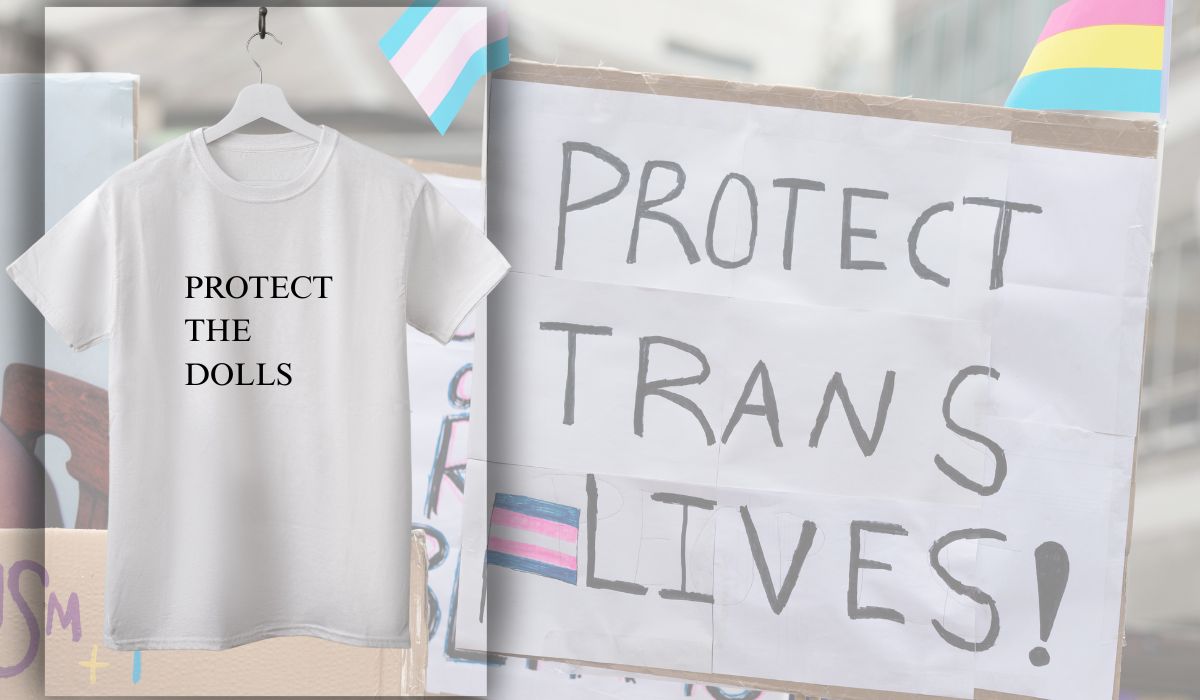
In February 2025, American designer Conner Ives closed his fall and winter show at London Fashion Week with a striking message — not spoken, but worn.
He walked the runway in a T-shirt reading “Protect the Dolls” a phrase that has since gone viral and ignited a wave of support for trans rights around the world. The shirt, now worn by celebrities and activists alike, has become more than a fashion statement — it’s a declaration of solidarity, a tribute to trans dignity and trans rights and a call to action.
“The night before the show, my team and I were sitting around throwing around slogans that we would put on a shirt, which led to Protect the Dolls,” explained Conner Ives in an interview with Trans Lifeline.
The phrase, simple yet powerful, was designed to cut through the noise.
“Maybe the reason that the catchphrase caught on,” said Ives. “Is that rather than coming in with testimonials or facts or percentages… this was maybe a way to simplify down the message to something that could just be said in three words.”
The word “doll” has deep roots in LGBTQ culture, tracing back to the 60s and 70s ballroom scene created by Black and Latino, trans and queer communities. In a world that routinely rejected them, calling each other “doll” was an act of affirmation — a way to celebrate beauty, softness and survival. The term of endearment became a symbol of sisterhood and resistance — a coded language of care in hostile environments. By calling each other dolls, we affirm our beauty, our care and our worth. Like the way societies throughout human civilization have treated cherished dolls — with love, nurture, and tenderness — the term has become a powerful emblem of resistance, sisterhood and self-love.
Today, as trans rights face increasing attacks both in the U.S. and around the world, remembering this legacy feels more urgent than ever. Earlier this year, President Donald Trump, now in his second term, signed multiple executive orders severely restricting transgender rights. Meanwhile, in the U.K., the Supreme Court’s redefinition of “woman” has excluded trans women from key legal protections, marking a major setback for equality. As Ives reflected, “It feels like we are sometimes living in two alternate realities simultaneously… the alternate reality where we have the people that we choose around us, and then the one filled with political theater and hysteria.” In this climate, “Protect the Dolls” is more than a slogan — it’s a rallying cry to defend our rights, affirm our dignity and celebrate the communities we build together.
The shirt’s message and its impact have turned this moment into a cultural flashpoint. Celebrities across fashion, film, music, and social media have rallied around the design, turning their platforms into megaphones for its mission. Pedro Pascal wore it to his 50th birthday party alongside DJ Honey Dijon and again at the European premiere of “Thunderbolts (2025).”
Troye Sivan wore it on stage during Charli XCX’s Coachella 2025 set, where they performed “Talk Talk” together — a redux of their joint tour last year. He later posted a photo wearing the shirt alongside Lorde, Charli XCX and Billie Eilish, further cementing its status as an iconic fashion moment. Other high-profile supporters include Addison Rae, Tilda Swinton, Haider Ackermann, Emma Brooks, bbno$, Lisa Rinna and Camille Charriere — all of whom have proudly shared it on social media. Their posts have helped catapult the shirt into the global spotlight, transforming it into both a fundraiser and a visual rallying cry.
The shirt which sells for £75 (about $99 USD), is available through Ives’s website, with 100% of the proceeds benefiting Trans Lifeline — a nonprofit organization run by and for trans people. Since its launch, over 5,000 shirts have been sold, helping to fund Trans Lifeline’s critical services, including its peer-led crisis hotline and its micro-grants program, which has already distributed over a million dollars directly to trans people.
“I think maybe what really sealed the deal for me was reading the quip somewhere where this is a trans-led U.S.-based charity benefiting trans people,” said Ives.
“I’m not the one picking up the phone helping these people or answering the phones. I think that was really why I wanted that to go where it was going,” he emphasized.
He also emphasized the importance of transparency: “When people say $100 for a T-shirt is a lot, we break down the costs for them. We show them how we’re using organic cotton, fair trade environments, reputable factories—and that over two-thirds of proceeds are going to charity.” Ives even encourages critics to take action however they can: “If the shirt isn’t accessible for you, we tell people: make your own, and donate whatever you can directly to Trans Lifeline.”
What started as a closing runway moment has become a movement. “It feels now like it’s turned into something bigger than just a T-shirt,” Ives reflected. “It’s become a universal concept that is for the people as well. We don’t own that phrase.” In fact, when asked about trademarking Protect the Dolls, Ives responded, “Honestly no, because it’s not mine to own.”
“Protect the Dolls” is more than a fashion statement — it’s a declaration of solidarity and a call to action. Every shirt worn is a stand against the forces that seek to erase us, a tangible investment in a future where trans people not only survive, but thrive. It’s a reminder that our lives, our joy, and our futures are worth fighting for.
Because in the face of systemic violence, we protect each other.
We protect the dolls.
Commentary
From pride to policy, it’s time to build in WeHo
‘West Hollywood isn’t just coasting on its values—we’re acting on them’

By John M. Erickson, West Hollywood City Councilmember
West Hollywood has always stood as a beacon for LGBTQ people, for the
marginalized—for anyone chasing a place to be safe, seen, and supported. But that
promise is slipping away. If people can’t afford to live here, then West Hollywood becomes a symbol, not a sanctuary.
The housing crisis gripping Southern California is particularly acute in LGBTQ communities. Whether it’s trans women of color pushed into homelessness, queer youth aging out of foster care, or seniors on fixed incomes being priced out of the very neighborhoods they helped shape—our inability to build enough housing is deepening the inequality we claim to fight against. Our failure to build enough housing is not just a policy gap—it’s a moral one.
This isn’t theoretical. It’s personal.
As a gay man and a progressive policymaker, I know what it means to live at the intersection of identity and action. I carry the legacy of those who fought for a seat at the table—and the duty to do more than just sit there. Right now, that means confronting a housing system that’s failing the very people we claim to protect.
When West Hollywood became a city in 1984, we inherited density. We had walkable
neighborhoods, apartment buildings, and a diverse housing stock. But we froze. For 40
years, our zoning has barely moved.
In the last 25 years, WeHo has actually decreased in population. Meanwhile the number
of Americans who identify as LGBTQ+ has more than tripled in that same amount of
time. We haven’t kept up with demand, and we haven’t met the needs of the vulnerable
communities we claim to champion.
That’s about to change.
On Monday, May 5th, I’m introducing a sweeping housing reform package aimed at one
thing: making it easier, faster, and cheaper to build homes in West Hollywood. Not just
luxury condos—homes people can actually live in. That means slashing red tape. Cutting delays. Dismantling outdated rules that stall projects and drive up rents.
This isn’t about bulldozing neighborhoods or silencing community voices. It’s about
fixing a broken system—one built for a different era and completely out of step with the
urgency of now. It’s time to stop confusing progressive branding with progressive
outcomes. We need real reform: faster processes, smarter regulations, and yes—political courage.
Will this fix everything overnight? No. But it will send a clear message: West Hollywood
isn’t just coasting on its values—we’re acting on them.
Housing justice is LGBTQ+ justice. It’s racial justice, economic justice, and generational
justice. We don’t get to call ourselves a queer haven if only the rich and lucky can live
here. The West Hollywood of the future must make room for drag artists, Trader Joe’s
cashiers, trans youth, longtime renters—and anyone else trying to build a life with
dignity.
A city that flies the Pride flag can’t stand by while its most vulnerable residents are
priced out and pushed out. We owe the next generation more than just slogans and
rainbows. Let’s leave them keys.
Community Perspectives
Have our gay gyms gotten a little too steamy?
As gyms shift their focus to serve a broader, younger, more mainstream clientele, the future remains unclear
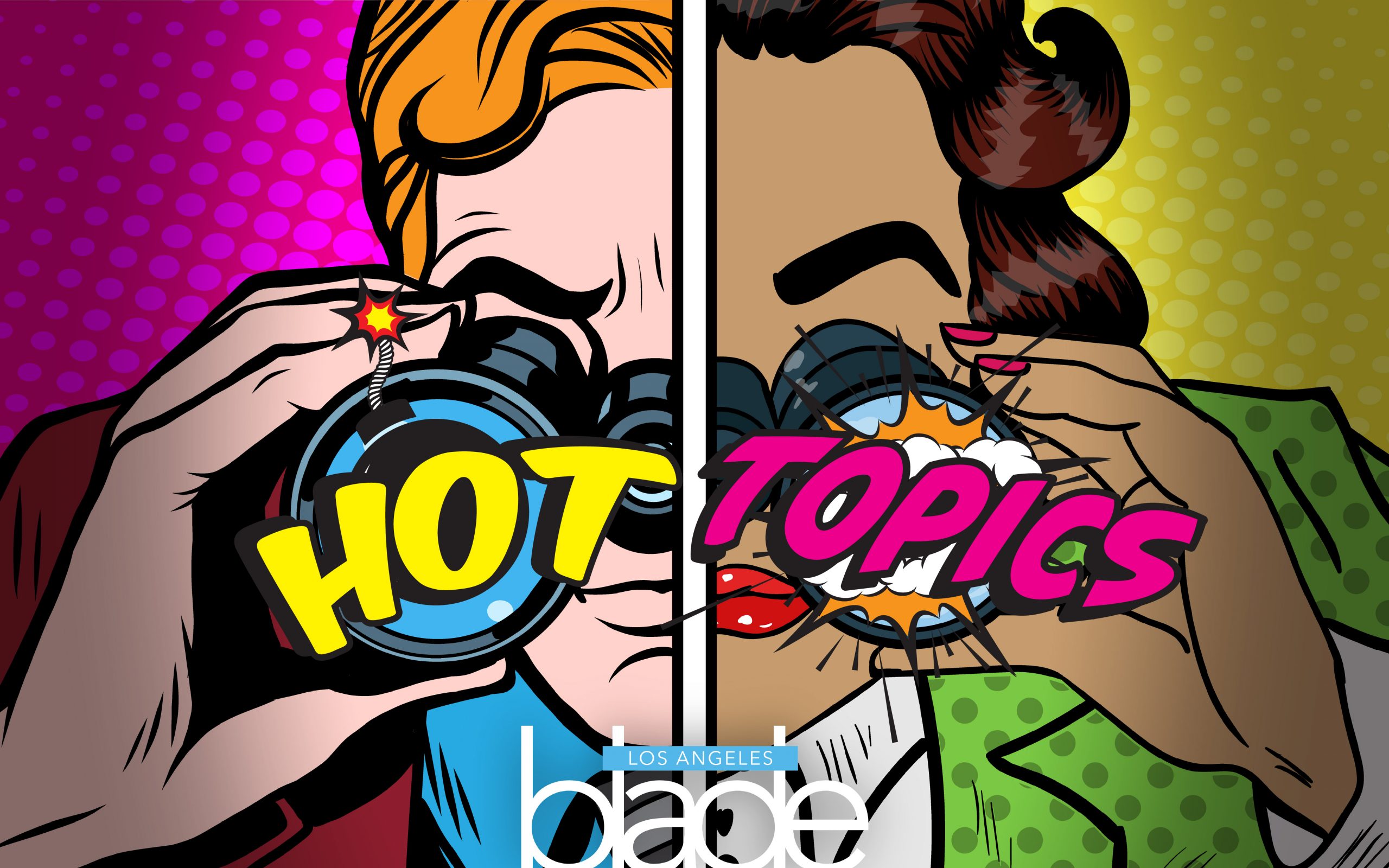
One undeniable truth still stands: public sex acts of any kind are illegal, as in, against the law.
Another day, another endorphin-boosting pump at the gym.
Next stop: the steam room.
My circulation and lactic acid levels will thank me later. After a quick shower, I approach the steam room door and, to my surprise, I see a notice taped to it:
STEAM ROOM RULES
Guests entering must be dressed appropriately.
Workout shorts, swim attire, or towel ARE REQUIRED at all times.
Camera use is allowed ONLY within the STEAM ROOM AREA.
Initially, I was taken aback.
In an environment meant to offer a moment of relaxation before diving back into the chaos of the city, the last thing anyone needs is a dose of CCTV surveillance. My shock was brief, though, as I quickly realized why the gym had taken such a drastic step.
This issue isn’t unique to New York City or David Barton’s Gym U. After several closures and re-openings of their steam room, Crunch WeHo — another predominantly gay gym — has indefinitely closed its men’s steam room. I also learned that a Crunch location in Brooklyn has followed suit. I imagine both gyms now display similar notices warning that ‘inappropriate behavior will not be tolerated.’
As anyone who’s frequented a gym’s steam room in any major city knows, these spaces are no strangers to cruising. This isn’t a new phenomenon. For decades, gyms – and their locker rooms and amenities — have served as ground zero for gay cruising. If this surprises you, pick your jaw up off the floor and Google the meaning behind the village people’s
Young Men’s Christian Association. You might feel a little awkward the next time it’s sung en masse at a sports game or (eye roll) an inauguration.
Many see cruising as part of a shared gay culture at these unofficially gay fitness clubs. However, the growing number of complaints to gym staff about these post-pump antics suggests otherwise. This raises the question: has the ‘inappropriate’ behavior in these spaces become so prevalent that closures and Orwellian surveillance are now the only solutions?
Years ago, same-sex sex was a criminal act and treated as such. Back then, sex became a form of protest for many gay men and others in the LGBTQ+ community. It was a way of saying, ‘We exist, we have the right to exist and we have the same right to get off as anyone else.’
Since then, both the LGBTQ+ community and the politics surrounding it have evolved. With more queer people adopting what many consider a heteronormative or family-oriented lifestyle, and with the rise of sex positivity, can we still view sex as a form of protest? On the other side of the three dollar bill, are those who are getting down in the dank dark of our steam rooms seeing this action as a way of preserving a tradition that they hold near, dear and queer?
This situation is a bit more layered than a simple ‘then and now’ generational shift. Over the decades, certain fitness centers in cities like New York, Los Angeles and Chicago have been recognized as gay spaces, with a loyal, predominantly gay clientele. However, now these gyms are distancing themselves from their LGBTQ+ identity — sometimes quite literally shedding their pride flags.
Now, they’re offering student discounts not to the City Universities of New York, but exclusively to NYU and PACE — targeting a younger, straighter and more affluent clientele. So, when ’23-year-old finance bro Bobby’ walks into the steam room to find two men in the middle of a vigorous forearm workout… Sorry Bobby.
It’s the ultimate risk that comes with sneaking in that last “spot” off the gym floor. Many folks who don’t partake turn a blind eye – or even offer a blasé wink when they walk into the steam room. Then there are those who would prefer a steam room where people’s hands remain in sight while their other bits do not. In today’s tense political climate, is it ending up on a list forbidding you to be within 500 feet of schools?
Ultimately, the steam room – a once cherished space with a sense of freedom and unspoken connection as palpable as its wafting clouds of moisture – has found itself to be a microcosm of the broader tensions both within the LGBTQ+ community and society. As gyms shift their focus to serve a broader, younger, more mainstream clientele, the future of steam rooms remains, well, unclear.
AJ Sloan is a writer, retired adult performer, and clinical counseling graduate student. His work has been featured in Huffington Post and The Advocate and led his own weekly column for Fleshbot.
Community Perspectives
Why does Hollywood still struggle with trans representation on screen?
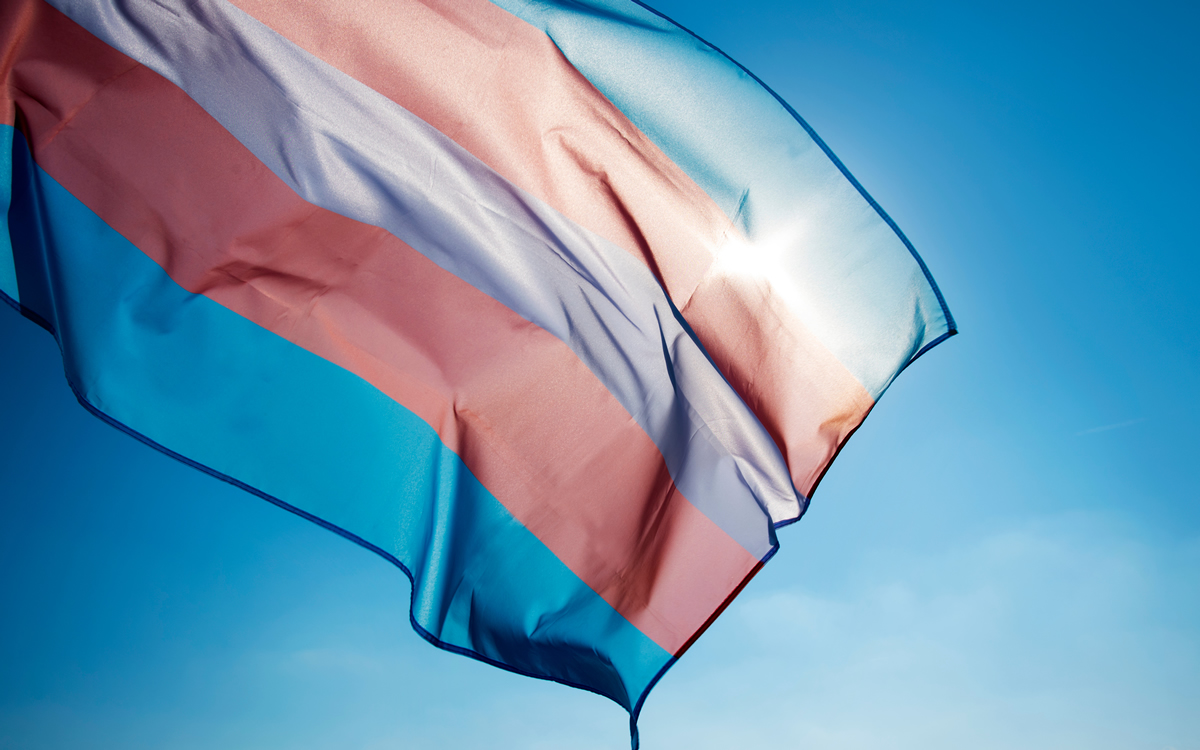
People outside the trans community can resist the unprecedented injustices by keeping trans people visible, telling our stories in ways that expose the lunacy of our nation’s politics and casting trans actors in roles that have nothing to do with gender.
Hollywood and anyone watching the ‘For Your Consideration’ film and TV series, should agree it’s time to lay this issue to rest.
Star of Beyond the Gates, Karla Mosley, told People she will not be playing another transgender role, calling it “truly inappropriate.” Mosley has always been a strong advocate on this issue of transgender representation on film and TV.
I’m personally sick of this debate I’ve embodied for a decade as a transgender actor. It needs to end – and yet the talking points persist.
I was the first out trans actor in Daytime television as the actually trans counterpart to Mosely’s transgender character on The Bold and The Beautiful. Ten years ago, Hollywood insisted, ‘actors should be able to play anything.’ Our response?
‘Then why weren’t trans actors cast in anything—even our own stories? Why was playing trans Oscar-worthy for cis actors while trans actors struggled to book speaking roles?’
There are always exceptions such as Jazzmun Crayton and Alexandra Billings – who deserve Lifetime Achievement Awards. But those divas each represent a dozen equally talented artists who couldn’t even get an audition.
Denying Hollywood’s past transphobia disrespects the transformation many Hollywood powerbrokers underwent to measurably level the playing field. And I was there – our fight in 2015 was against rampant transphobic employment discrimination.
Once we finally gained access and visibility, we wanted better representation. Watch the Netflix documentary Disclosure, for decades of psychotic killers and punchlines that trapped trans people in life offscreen. We’ve got receipts!
In the now quaint era of diverse entertainment (2015-2024, R.I.P.), we collaborated with cis executives who, even as they included us, still clung to their own idea of who we are.
But we made progress.
With a dozen others, I consulted behind the scenes on countless tv shows and films. We enriched storytelling with accuracy, vivid detail, and dialogue that leapt off the page.
Audiences had never seen anything like it.
Most creatives and production teams embraced this project; many had trans kids and wanted to create an inclusive world for them. Those who resisted lamented that the Hollywood system they dominated — founded in exclusion, maintained by abuse — had to change at all. As you consider my proposal, ask yourself: is that really the side you really want to take?
Trans actors agree — we can play any role!
First we must be called in to audition, then we must meet approval by approximately five levels of producers and executives to light up your screen. Too often, we run into Old Hollywood gatekeepers, or outright transphobia. The solution? See us for more roles—all roles. Flood the gates.
The urgency for showrunners and filmmakers to take this next step has never been greater. The frontman of this increasingly fascistic government now controls the Kennedy Center and mandated that the National Endowment for the Arts focus on America’s semi-quincentennial — while explicitly excluding diversity, drag, and trans stories.
Filmmakers and executives, now is not the time to pre-comply. Now is the time to uphold freedom of expression on any platform that will still allow it. Trans people embody freedom of expression! When a repressive government insists on rigid gender binaries, expand what it means to be a man or a woman. In a country determined to erase trans people from public life, star us in your stories, let us shine.
-
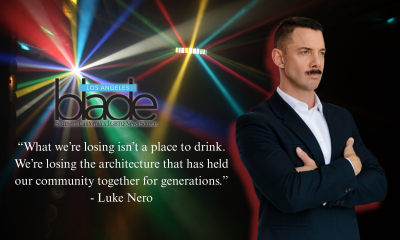
 Commentary3 days ago
Commentary3 days agoThe perfect storm: Our queer infrastructure is in crisis
-
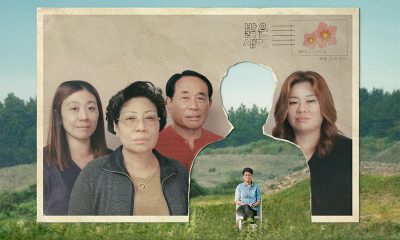
 a&e features4 days ago
a&e features4 days ago“I should have been there”: A queer Korean adoptee finds healing with original family members
-
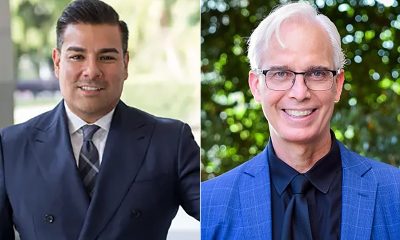
 California4 days ago
California4 days agoRicardo Lara, John Heilman inducted into Victory Institute’s Hall of Fame
-

 Television2 days ago
Television2 days ago‘Heated Rivalry’ is the gay hockey romance you didn’t know you needed
-
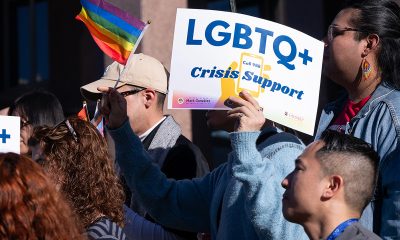
 LGBTQ+ Youth Mental Health3 days ago
LGBTQ+ Youth Mental Health3 days agoL.A. County officials advocate to reinstate “Press 3” crisis hotline for young queer people
-
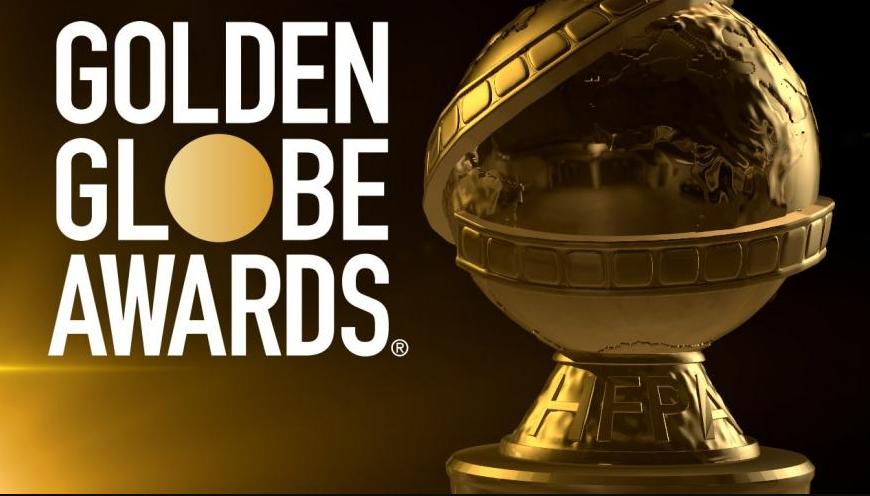
 Golden Globe Awards5 days ago
Golden Globe Awards5 days agoCynthia Erivo, Eva Victor, and ‘Blue Moon’ bring queer representation to Golden Globe film nominations
-

 Commentary2 days ago
Commentary2 days agoLove in the time of porn: a glimpse into the dating life of an adult performer
-
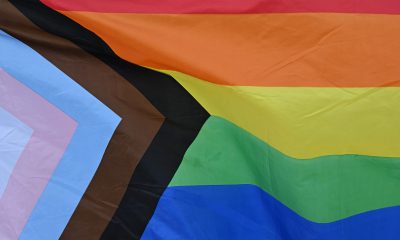
 Los Angeles21 hours ago
Los Angeles21 hours agoRecent L.A. County report reveals record number of hate crimes against transgender and nonbinary community members
-

 Music & Concerts22 hours ago
Music & Concerts22 hours agoSalina EsTitties and GMCLA are primed and ready for this weekend’s ‘Holiday Legends’
-
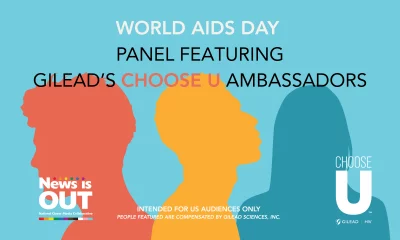
 Health2 hours ago
Health2 hours agoChoose U ambassadors share lived experiences with HIV, personal reflections, and insights
